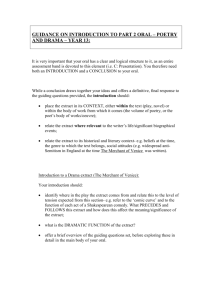roi
advertisement
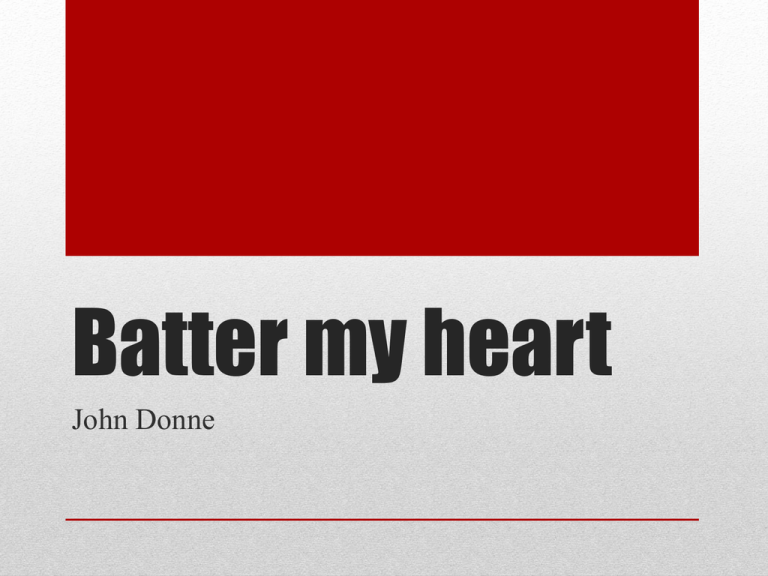
Batter my heart John Donne Literal and Contextual Understanding • Three-person’d God: The Trinity consisting of God the Father, Jesus the Son, and the Holy Spirit • Christian Paradox: The idea that to restore a spirit to life, it first must be broken or dismantled; that man must die to sin and be made new in Christ • viceroy: an official appointed by the king (Fr. roi) to rule in his stead, on his behalf • fain: a now archaic intensifier that meant "very much like to." • Betroth’d: formal agreement to marry • Enthrall: (1) capture the fascinated attention of; (2) enslave • Chaste: (1) abstaining from extramarital, or from all, sexual intercourse (2) without unnecessary ornamentation; simple or restrained • Ravish: (1) seize and carry off by force; (2) fill with intense delight, enrapture; (3) to force a woman or girl to have sexual intercourse against her will, rape Literal and Contextual Understanding • What is “captiv’d” in line 8? What is “weak” or “untrue”? Who is the town “due” to? • In lines 7-10, the enemy is mentioned but not named. Who might he be (consider options aside from the more obvious Devil) • Paraphrase lines 7-8 Figurative Language • What metaphor is developed in lines 1-4? • What simile is developed in lines 5-8? • What metaphor is developed in lines 9-14? Analysis of Technique • What is the effect of the enjambment in lines 1 and 3? • What is the contrast between lines 2 and 4? Understanding • Paraphrase line 13 • The paradox of line 13 is repeated, though the image is stronger, in line 14. What is the effect of this on the poem as a whole? Put it all together Describe the progression of the images created from the metaphor in lines 1-4 to the simile in lines 5-8 to, eventually, this closing image? What is the effect? How might the three images reflect the “Three-person’d God”? How does a fuller understanding of the vocabulary and the enjambment at the opening contribute to the purpose of this poem? According to A. J. Smith, University of Southampton • The Holy Sonnets “open the sinner to God, imploring God's forceful intervention by the sinner's willing acknowledgment of the need for a drastic onslaught upon his present hardened state…” • “The force of the petition measures the dire extremity of his struggle with himself and with God's adversary.” About the Author • Donne became an Anglican priest in January 1615, after being persuaded by King James himself. Donne’s reluctance came from his view that ministry was “too weighty for his abilities," according to his first biographer, Izaak Walton, who had known him well and often heard him preach. — A. J. Smith, University of Southampton About the Text • Donne did not write for publication. He authorized the publication of only two poems during his lifetime. His manuscripts were passed around his circle of friends, and some of them transcribed his poetry. • The Holy Sonnets were most likely written about 1609, before he became an Anglican priest. Reflection • How has attending to the details in this poem enriched your understanding of it? Explain any places in the poem that seemed obscure to you initially that now make sense. Any lines that still seem unclear? What, if anything, did you learn about yourself as a reader of poetry after studying this poem?
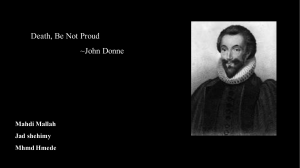
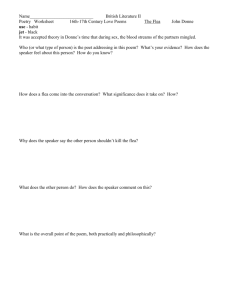
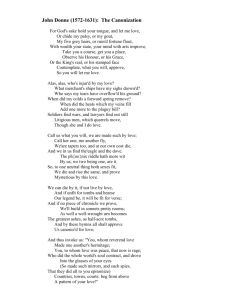
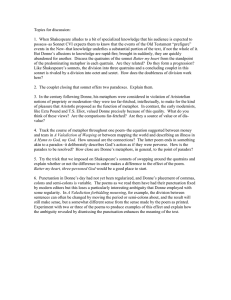
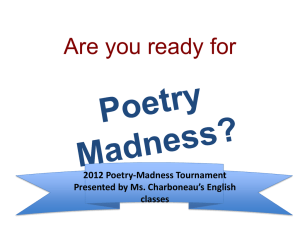
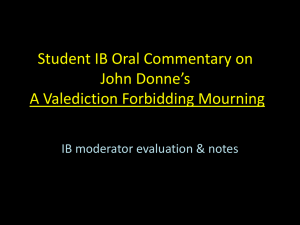
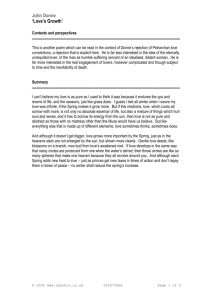


![Rubbish_at_Adultery_PPT[1]](http://s2.studylib.net/store/data/005413180_1-dcc8355f7048ef4c4a478bd14ccf6dc2-300x300.png)

